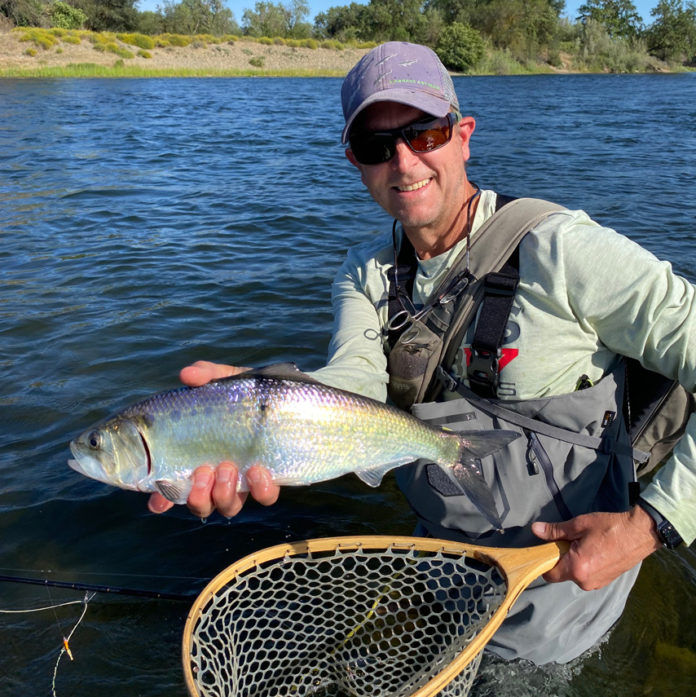Written by: Mike Pease, Mike Pease Adventures, and Noah Sondgroth, Orvis Roseville
Photos courtesy Mike Pease
Each spring, the lower American River near Sacramento becomes host to one of the most prolific runs of American shad on the West Coast. While these anadromous fish may lack the prestige of fellow ocean-going species such as salmon or steelhead, their sheer abundance, combined with their willingness to take a fly, make shad an increasingly popular target. There are great fishing spots throughout the stretch from Numbus Dam to Paradise Beach in East Sacramento. You won’t be alone on this section of river, but the lower American below Nimbus Dam is very walkable with lots of public space to spread out on.
Timing

Map courtesy USGS
Shad start to arrive on the lower American River around the end of April. Look for floating “cotton” from the cottonwood trees on the surface, which usually coincides with the beginning of the run. Peak season occurs around mid-June, and will continue through July. Depending on conditions, you might even find a few straggler fish as late as September.
Gear

Most fly anglers here swing flies using a 6- to 7-weight rod and a sinking line to get down near the bottom. While 5-weights are popular for shad fishing in other regions, we find that they’re typically too light for these hard-fighting fish, which can reach 5 pounds. A short, level leader of 6- to 10-pound fluorocarbon tied to a small, flashy “dart” fly or two completes the rig. One of our personal favorite dart patterns for this area is the Bloody Maria. Anglers drifting shad darts under a traditional strike-indicator rig can also find success.
Tactics

Looking for likely shad spots is very similar to looking for steelhead, since both species tend to hold in the same types of water: riffles, breaks in the current, and walking-speed runs. Presentation techniques are also mostly the same, using nymphs to probe seams near the head of runs, and swinging flies through the slower pools and tailouts below. One notable difference, however, is that the shad bite tends to turn off when the sun is directly overhead around noon. They’ll turn back on after an hour or so, but the best trips are usually scheduled during mornings or evenings in order to avoid the midday doldrums.
Mike Pease is owner and operator of Mike Pease Adventures in Sacramento, and his former student Noah Sondgroth is now fly-fishing supervisor at the Orvis Store in Roseville.
Credit: Source link






























